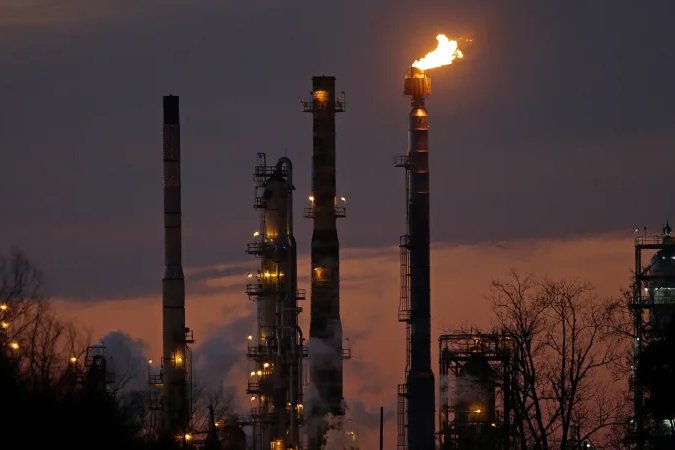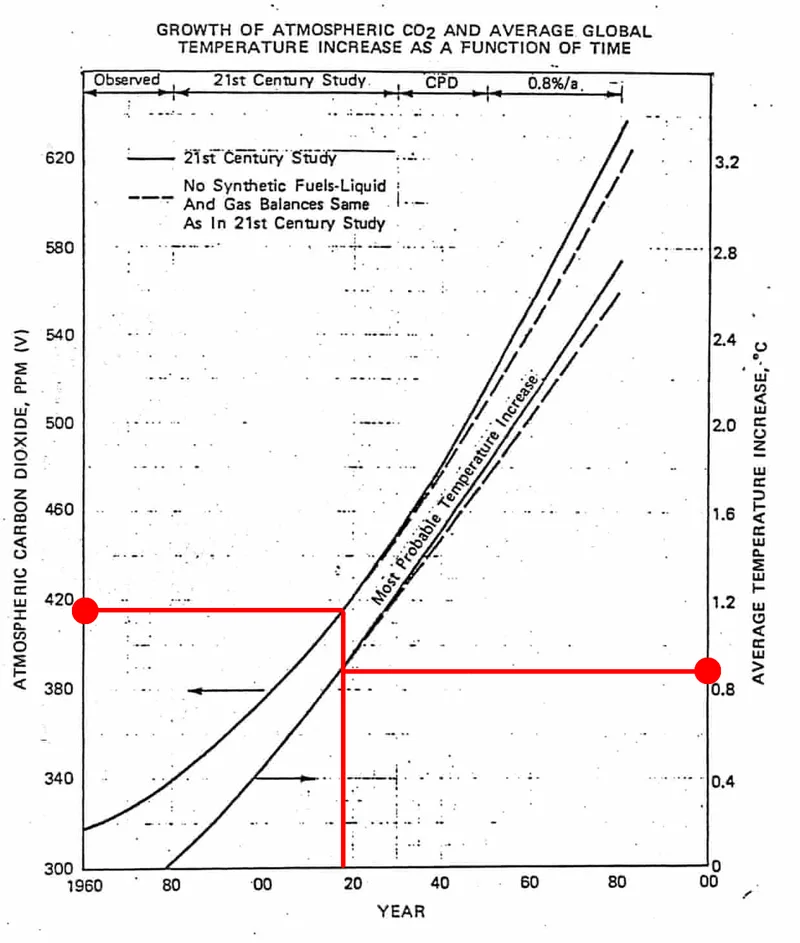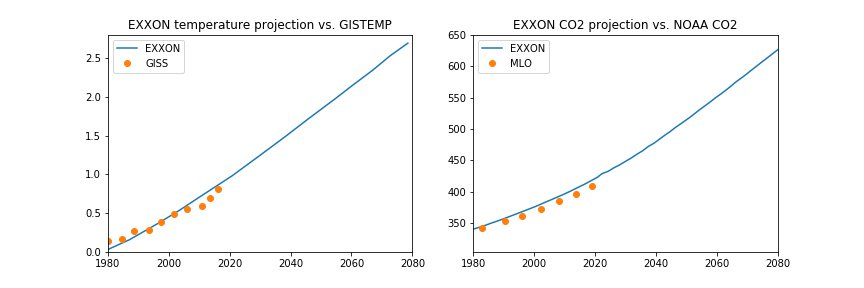
Date: 2024-09-27 Page is: DBtxt003.php txt00016718
Corporate Irresponsibility
Exxon re Climate Change
Exxon Predicted 2019’s Ominous CO2 Milestone in 1982
Peter Burgess

Illustration for article titled Exxon Predicted 2019’s Ominous CO2 Milestone in 1982 Photo: AP
Atmospheric carbon dioxide sets a new record every year. This year’s cracked the ominous milestone of 415 parts per million (ppm) thanks to ever rising emissions from human activities. The sharp rise might seem like something nobody could’ve predicted but there’s at least one group of scientists that were on the money 37 years ago: Exxon’s ace team of scientists.
Internal memos unearthed in InsideClimate’s Pulitzer-winning 2015 investigation into the company revealed all sorts of solid science being done even as the oil giant sowed doubt in public. Bloomberg reporter Tom Randall revisited the memos in light of the world’s new carbon dioxide milestone and tweeted a graph from one showing just how much Exxon knew what our future would look like.
It’s eerie seeing how well the company understood both climate science and the world’s patterns of economic growth built on the back of fossil fuels. Here’s that chart, annotated for ease of reading:

Red lines show where Exxon thought the world’s carbon dioxide levels and temperatures would be at around 2019. Image: InsideClimate News
The prediction is a pretty damn good one. The world is now about 1 degree Celsius (1.8 degrees Fahrenheit) warmer than it was and carbon dioxide levels are at 415 ppm. The estimate was part of Exxon’s “high case” scenario, which assumed fossil fuel use would quicken and that the world would be able to tap new reserves in the late 2000s from at the time unreachable shale gas. The memo also warned that the extra carbon dioxide would enhance the greenhouse effect and that an “increase in absorbed energy via this route would warm the earth’s surface causing changes in climate affecting atmospheric and ocean temperatures, rainfall patterns, soil moisture, and over centuries potentially melting the polar ice caps.”
Honestly, it gave me chills re-reading the memo 37 years later. The company clearly described all the horrors we’re facing now. The only thing its scientists got wrong was that what they called “potentially serious climate problems” wouldn’t emerge until the late 21st century. So much for that.
Andrew Dessler @AndrewDessler Follow Follow @AndrewDessler
Prediction of the future from 1982 by @exxonmobil , along with data showing how it has actually evolved. Exxon's predictions were extremely accurate. #ExxonKnew @GeoffreySupran @NaomiOreskes

8:16 AM - 14 May 2019 1,527 Retweets 2,332 Likes Gonçalo Peres 龚燿禄graham cresseyJyrki AlakuijalaAnne RossAnda #NightKing'Folks Call Me Dill'Ralph HofmeierJosée DesrosiersBruce King 51 replies 1,527 retweets 2,332 likes Reply 51 Retweet 1.5K Like 2.3K
This @exxonmobile chart from 1982 predicted that in 2019 our atmospheric CO2 level would reach about 415 parts per million, raising the global temperature roughly 0.9 degrees C.… Show this thread 3 replies 81 retweets 238 likes Reply 3 Retweet 81 Like 238
In a non-sociopathic hands, the chart should have been a warning that increasing fossil fuel production and use was putting the world in grave danger. But instead, it was something Exxon buried in internal documents as the company turned to questioning climate science in an effort to preserve its bottom line.
All of this is why the company and other oil majors are now facing a host of lawsuits for spending decades misleading the public and shareholders as well as calls for trying fossil fuel executives for crimes against humanity. Those decades of spreading denial are why we’re now facing a crisis and the need to rapidly drawdown emissions. Because the future Exxon charted back in 1982 is one we don’t want to be headed towards.